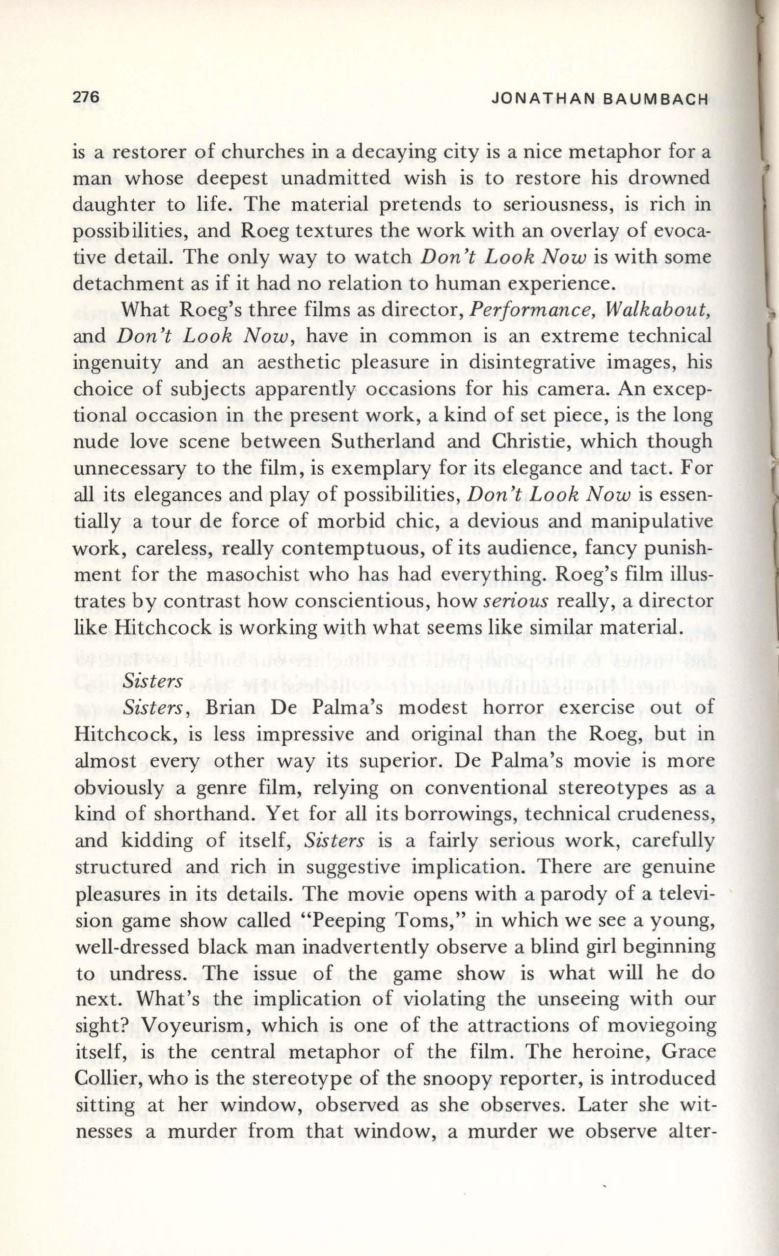
276
JONATHAN BAUMBACH
is a restorer of churches in a decaying city is a nice metaphor for a
man whose deepest unadmitted wish is to restore his drowned
daughter to life. The material pretends to seriousness, is rich in
possibilities, and Roeg textures the work with an overlay of evoca–
tive detail. The only way to watch
Don't Look Now
is with some
detachment as if it had no relation to human experience.
What Roeg's three films as director,
Performance, Walkabout,
and
Don't Look Now,
have in common is an extreme technical
ingenuity and an aesthetic pleasure in disintegrative images, his
choice of subjects apparently occasions for his camera. An excep–
tional occasion in the present work, a kind of set piece, is the long
nude love scene between Sutherland and Christie, which though
unnecessary to the film, is exemplary for its elegance and tact. For
all its elegances and play of possibilities,
Don't Look Now
is essen–
tially a tour de force of morbid chic, a devious and manipulative
work, careless, really contemptuous, of its audience, fancy punish–
ment for the masochist who has had everything. Roeg's film illus–
trates by contrast how conscientious, how
serious
really, a director
like Hitchcock is working with what seems like similar material.
Sisters
Sisters,
Brian De Palma's modest horror exercise out of
Hitchcock, is less impressive and original than the Roeg, but in
almost every other way its superior. De Palma's movie is more
obviously a genre film, relying on conventional stereotypes as a
kind of shorthand. Yet for all its borrowings, technical crudeness,
and kidding of itself,
Sisters
is a fairly serious work, carefully
structured and rich in suggestive implication. There are genuine
pleasures in its details. The movie opens with a parody of a televi–
sion game show called "Peeping Toms," in which we see a young,
well-dressed black man inadvertently observe a blind girl beginning
to undress. The issue of the game show is what will he do
next. What's the implication of violating the unseeing with our
sight? Voyeurism, which is one of the attractions of moviegoing
itself, is the central metaphor of the film. The heroine, Grace
Collier, who is the stereotype of the snoopy reporter, is introduced
slttmg at her window, observed as she observes. Later she wit–
nesses a murder from that window, a murder we observe alter-


